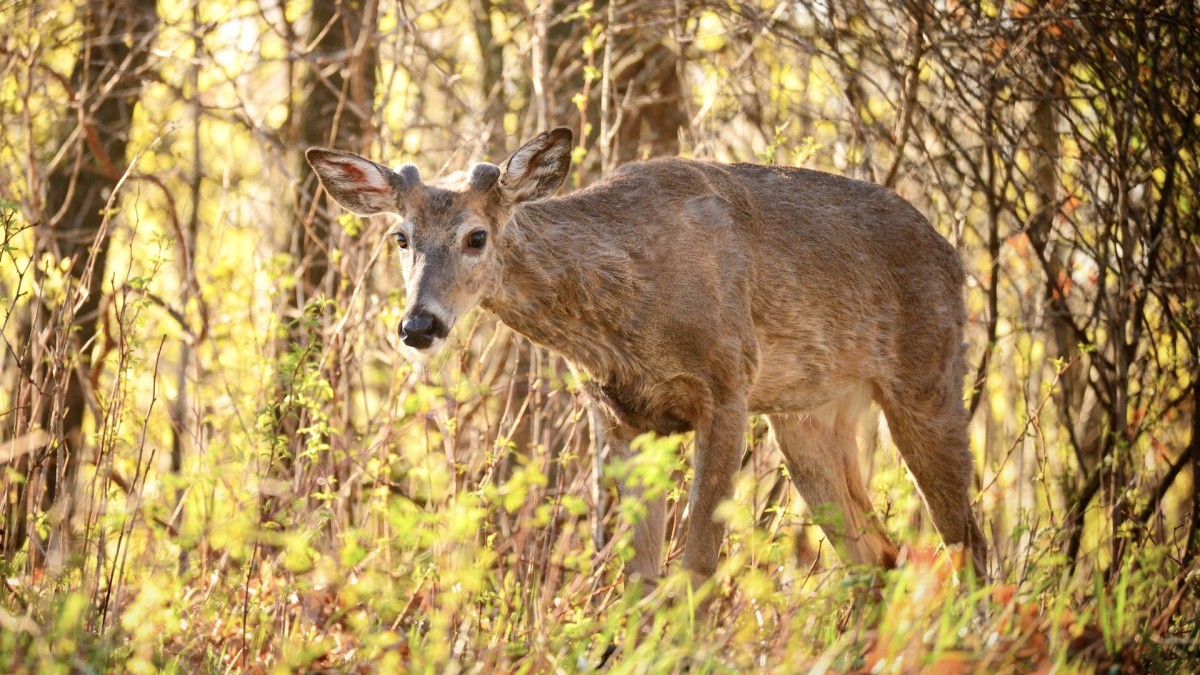
It’s a rare day that I focus my hunting efforts on individual bucks. It’s just not my style, and I don’t have much ground to work with where it’s a feasible strategy. It’s not that I haven’t gone down that road in the past—because I have—it’s just that today, it doesn’t make much sense for me.
What does make sense for me, and probably for you as well, is to learn to identify general mature buck core areas. These locations, provided the habitat doesn’t change or they don’t witness a huge influx of hunting pressure, are generational. If there’s one thing whitetail bucks are masters at, it’s identifying the areas where they have a huge survival advantage. This is not something that’s limited to individual deer.
The more you can sniff out the places where bucks feel comfortable, the more you can craft a hunting plan that allows you to poke around the edges and put yourself in the game. The best opportunity to start this quest is during winter scouting missions.
Understanding Core Areas
When we think about a buck’s home range, we think of it being a uniform shape. Sure, if you have a block of timber and ag that is exactly one square mile, that might do it. If you’re dealing with western river-bottom bucks, swamp dwellers down south, or just about any habitat and land-use variable you can think of, it’s not so simple.
It gets even less simple when you think about a core area inside that home range. We often daydream of a 20-acre patch of gnarly habitat, usually with some elevation involved. In many situations, that would make a great core area, but I don’t think it’s so cut and dry. It seems like if bucks truly had small patches of cover that they frequented over and over, we’d kill them easier.
I believe bucks, mostly bucks that live with real hunting pressure, have multiple core areas. This only makes sense from an evolutionary and survival perspective. If you’re a prey animal and you don’t want to become dinner, you can’t afford to be overly predictable.
You have to have multiple safe spots to bed, browse, lay down sign, and just spend the daylight hours. These locations are the key to their survival, and the key to how we can pattern them, which starts now.
Winter Scouting For Core Areas
Winter scouting is a blanket term for getting out there and covering ground in search of deer sign. It’s valuable, but you have to look for the right stuff. For me, when I’m trying to pin down core areas that I’ll definitely hunt in six or eight months, this involves rub lines. I like scrapes and big tracks, but rub lines betray buck habits better than anything.
Big deer can’t help but make rubs. They do this when they leave their beds to go feed and when they leave the feed to go to bed. Oftentimes, core areas will have spoked-out rub lines leading to and from the areas in which bucks spend their daylight hours.
The problem here is rub lines aren’t always as obvious as they should be. In many types of habitat you won’t be able to stand in one spot and look at a dozen rubs all leading away from a nice hillside bench. You might find a few rubs along a trail and then circle back to find a few more rubs leading down a different trail in the opposite direction.
I find that if I’m winter scouting and I’m walking in one direction for too long, I’m usually missing out. Identifying real core areas tends to involve almost a grid-search mentality. It’s more of a micro-scouting strategy versus a macro one, if that makes sense.
Core Areas + Trail Cameras = Future Dead Bucks
When you start to figure out some likely core areas, the best strategy is to run cameras in the off-season if you can. Even mature bucks that have shed their antlers are pretty obvious, and it doesn’t matter what their headgear looks like right now or throughout the next several months. What you want to do is confirm that these areas matter to mature deer.
There is an argument to be made that the deer using a fall core area might not need to spend much time there in the spring and summer. This is true, but it doesn’t matter. They’ll swing back through from time to time, and they won’t totally abandon the places they feel most comfortable.
The goal with dropping some cameras off in these spots and leaving them for months is to confirm your suspicions. A once-per-week visit from a buck tells you a lot. What tells you more, however, is when that same buck shows up on a camera that same week in a different core area.
The more data you have on these visits, the less random they become. This is the intel that allows you to hunt them correctly in the fall, and you can gather much of it right now.
For more information on whitetail hunting, check out these articles: Why You Might Want to Forget About Mature Bucks and Just Hunt, How to Find More Mature Buck Sheds This Season, and Why Are So Many Deer Hunters So Lazy?



